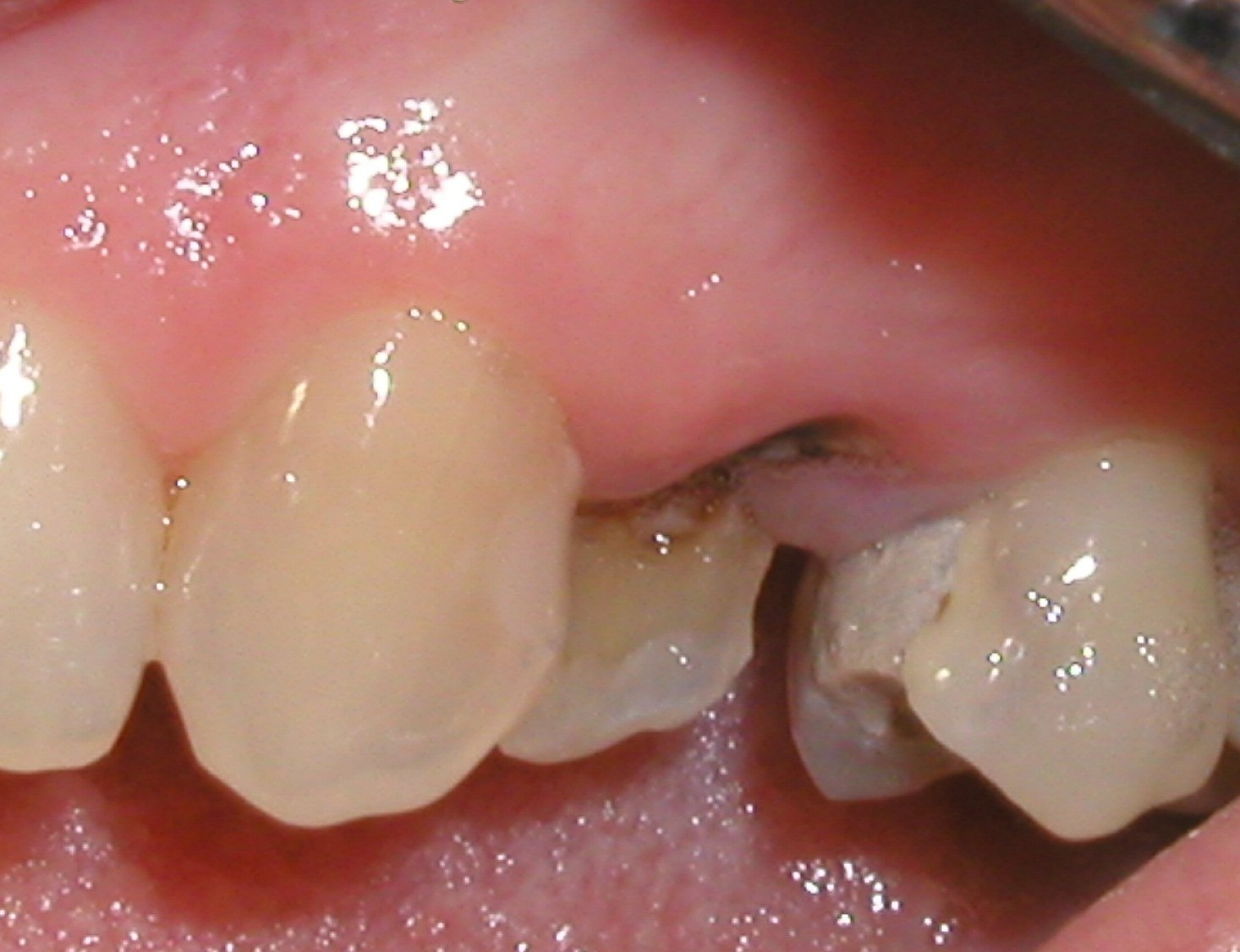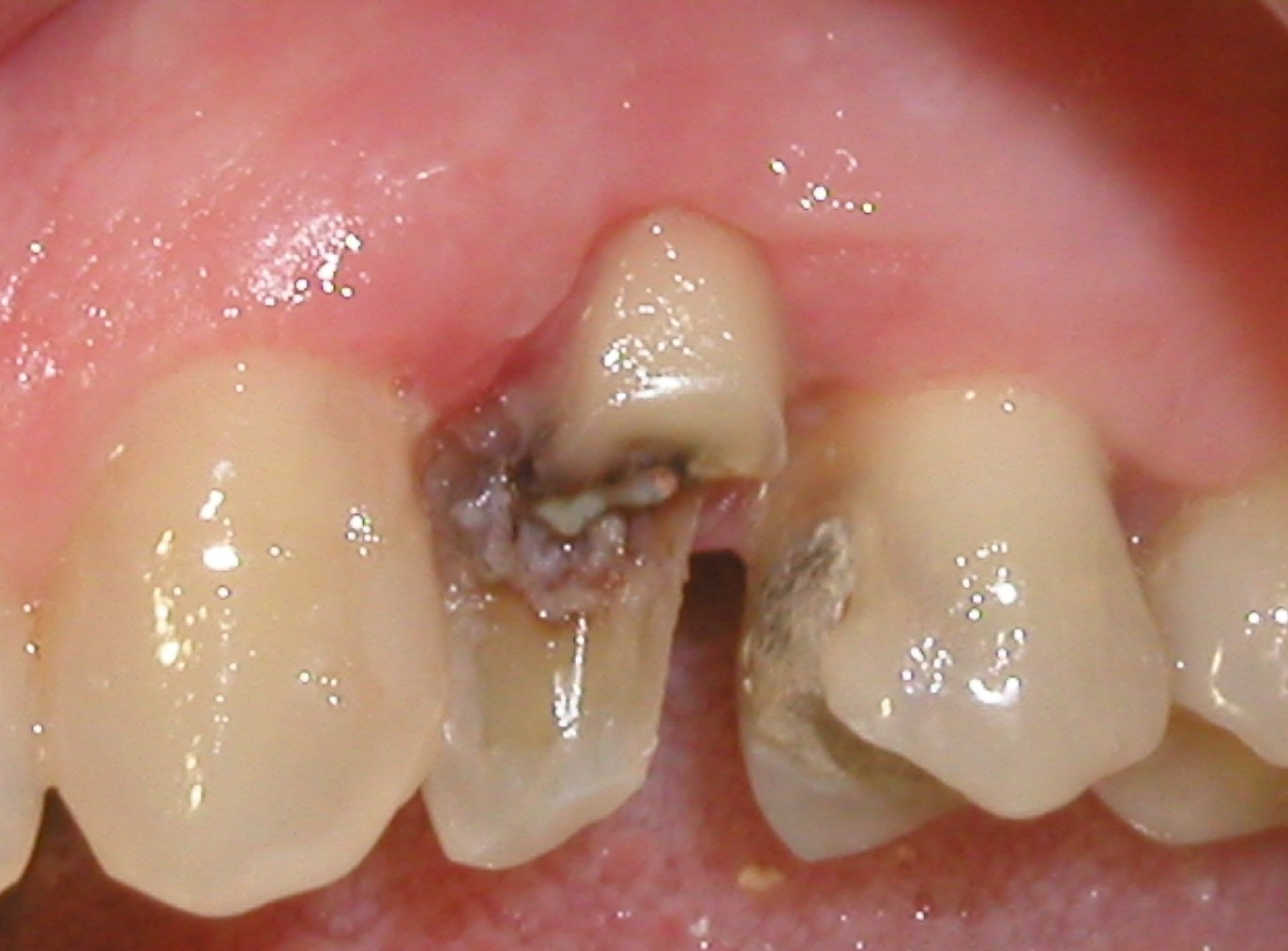Gum recession is one of the most noticeable results of periodontal disease (gum disease) and is the movement of the gum line down the root of a tooth. Recession can be limited to one tooth or many and symptoms vary from none at all to root sensitivity, inflammation of the tissues, root exposure, cavities, or esthetic concerns. It's important to have gum recession repaired because gum tissue is the primary barrier to bacteria. Without adequate gum tissue around the teeth, bacteria can cause gum disease, bone and gum deterioration, and even tooth loss.
Gingival Graft
The gingival graft procedure is one of the most common surgical procedures performed in our office. It is used to correct or prevent further gingival recession on one or more teeth. The problem area usually involves the lower front teeth. There are a number of causes for recession in this area such as congenital defects, high muscle attachments or occlusal (bite) problems. After local anesthesia is gently given with the WAND (computer controlled injection) the treatment consists of the preparation of a small surgical bed. That is the area where the graft will be placed. Then a small strip of tissue about ½ inch in length is harvested from the gum tissue adjacent to the upper back teeth (molars). The harvested tissue (the graft) is placed on the previously prepared surgical bed and glued in position with surgical glue.
This procedure eliminates the need to take tissue from the palate which can be uncomfortable post operatively. Whereas in the procedure we use there is virtually no post-operative pain at the donor site. The grafted tissue quickly attaches to its new location within 48 hours. This procedure is one of the most predictable periodontal procedures and has nearly a 100% success rate.
.jpg)

Coronal Grafts
The purpose of a coronal graft is to cover the area of recession using the tissue adjacent to the recessed area. You could think of it as a "Facelift" for the gums. After gentle anesthesia is achieved with the WAND, tiny instruments are used to detach the gum tissue from the underlying bone. Then additional dissection is performed to allow relaxation and vertical movement of the tissue. The relaxed tissue is now draped over the recessed areas of the teeth and sutured in place with small sutures. Healing is quite rapid! There is minimal post-operative discomfort. And, the recessed areas are now covered.


Pedicle Grafts
The pedicle graft is used to cover an exposed root surface by moving tissue from an adjacent tooth to the tooth with the exposed root. This procedure can only be used if there is adequate tissue on the adjacent tooth. Although rarely used because of limited donor tissue, when performed the results are very nice.


Esthetic Crown Lengthening
Those who feel that the y have a "gummy" smile can greatly benefit from esthetic crown lengthening. This relatively simple procedure usually takes about an hour to perform and is essentially a "gum lift". During the procedure, the doctor removes excess gum and bone tissue and reshapes the smile to expose more of the natural tooth. While the procedure can be performed on just one tooth, it is most often done to the entire smile. The end result is that more of the natural tooth is exposed creating a wider, more beautiful smile.
y have a "gummy" smile can greatly benefit from esthetic crown lengthening. This relatively simple procedure usually takes about an hour to perform and is essentially a "gum lift". During the procedure, the doctor removes excess gum and bone tissue and reshapes the smile to expose more of the natural tooth. While the procedure can be performed on just one tooth, it is most often done to the entire smile. The end result is that more of the natural tooth is exposed creating a wider, more beautiful smile.
Esthetic crown lengthening can also be done to preserve the health of the smile. Removing excess gum tissue can help control and prevent periodontal disease. Increasing the exposed surface area of the tooth will decrease the depth of pockets between teeth where bacteria can grow and harm your teeth and gums.
Prior to the procedure a local anesthetic will be administered to prevent pain and discomfort. Small incisions in the gum tissue will be needed to separate the gums from the teeth. In some cases, a small amount of bone will also need to be removed to create a natural smile. Once the procedure is completed, the doctor will clean the incisions with sterile water and place sutures and a protective bandage over the area to encourage the teeth and newly contoured gums to re-attach to each other. A follow up appointment will be needed one to two weeks after the procedure to have the sutures removed and so that the doctor can evaluate healing. Complete healing usually takes two to three months.
Functional Crown Lengthening
Sometimes functional crown lengthening will be needed in order to perform a cosmetic or restorative procedure. This may be the case if a tooth is decayed or broken below the gumline and has insufficient structure above the bone and gum tissue for proper placement of a restoration or crown. In cases like this, the dentist may be required to lower the gum and bone levels to expose more of the root surface so it can be restored. However, simply trimming back the gum line is not sufficient. Instead, the dentist will need to reshape the gums and supporting bone to allow for adequate room to place a high quality restoration.
The procedure is similar to esthetic crown lengthening in that a local anesthetic will be administered. Small incisions are required to remove the gum tissue and reshape the area. After the area has completely healed (4-6 weeks), the final restorative dentistry such as a crown or bridge can be placed.

